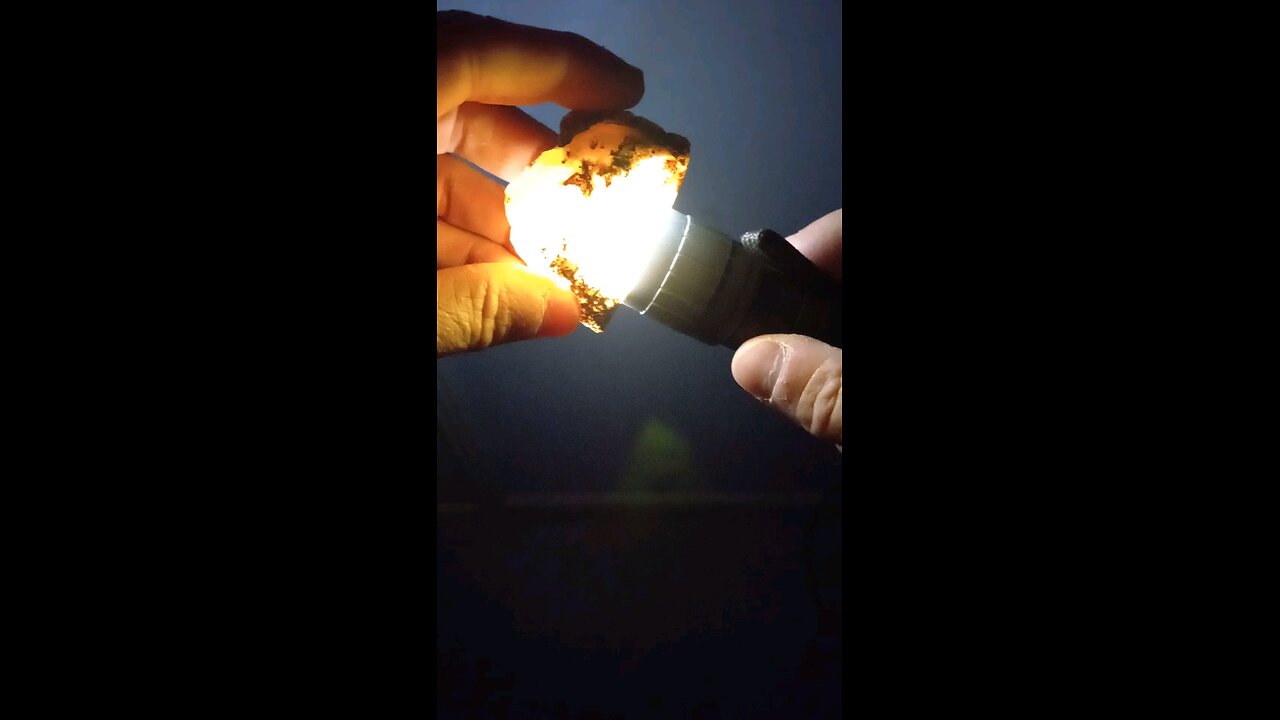Premium Only Content

Beautiful Opal Glow!
Opal is a hydrated amorphous form of silica, with a water content typically between 3 and 21% by weight, most commonly around 6-10%. It's deposited at relatively low temperatures and can be found in the fissures of various rock types, including limonite, sandstone, rhyolite, marl, and basalt. Here's a deeper look into opal:
Types of Opal:
Precious Opal: Known for its "play-of-color," which is an optical phenomenon where colors flash or change as the angle of light or observation changes. This effect is due to the diffraction of light through the microscopic silica spheres within the opal.
Common Opal: Lacks the play-of-color and can come in a variety of colors like white, black, grey, yellow, orange, red, or brown. It's often referred to as "potch" when not gem-quality.
Fire Opal: Typically ranges in color from yellow to orange to red and can be transparent to translucent. Fire opals can exhibit play-of-color, but their name comes from the fiery body color.
Boulder Opal: A type of opal naturally attached to its host rock. It's often cut with the host rock to provide stability and to enhance the visual appeal.
Matrix Opal: The opal fills the cracks and cavities within the host rock, creating a network of opal that's visible on the surface.
Formation:
Primary Opal: Forms through the slow deposition of silica from groundwater in cavities or fractures of rocks.
Secondary Opal: Can form by weathering or alteration of other minerals, often in more superficial environments or through the action of silica-rich waters.
Locations:
Australia: The world's leading source, especially for precious opal, with significant deposits in places like Coober Pedy, Lightning Ridge, and White Cliffs.
Ethiopia: Known for its black opals and more recently discovered opal fields.
Mexico: Famous for fire opals.
Brazil: Produces a variety of opals, including crystal opal.
Properties:
Hardness: Typically ranges between 5.5 to 6.5 on the Mohs scale, though it can be softer if less hydrated or harder if more silica-rich.
Luster: Can range from waxy to resinous to vitreous.
Transparency: Varies from opaque to semi-translucent to transparent.
-
 LIVE
LIVE
The White House
1 day agoLo-Fi MAGA Video to Relax/Study To 🇺🇸
620 watching -
 5:04:28
5:04:28
Grant Cardone
6 hours agoReal Estate Interactive DAY 2
42.8K3 -
 16:55
16:55
Stephen Gardner
1 day agoBUSTED! Letitia James STOLE $41k in Tax Payer Funds for LUXURY PRIVATE JETS!!
110K266 -
 2:09:16
2:09:16
TheItalianCEO
3 hours agoI LOVE Metal Gear Solid - Metal Gear Solid V
19.6K1 -
 17:41
17:41
DeVory Darkins
2 days ago $100.31 earnedTrump DEFUNDS NPR as Jobs Report drops BAD NEWS for media
73.4K185 -
 50:11
50:11
Squaring The Circle, A Randall Carlson Podcast
1 day ago#046 The Dynamic Planet: Understanding Global Climate Change - Squaring the Circle
35.4K16 -
 LIVE
LIVE
Scottish Viking Gaming
4 hours ago💙Rumble Partner :|: Sunday Funday :|: Variety Stream and Shit Show!
96 watching -
 LIVE
LIVE
Sgtfinesse
4 hours agoSunday Desuckafication in WoW SOD | Giveaway Today
136 watching -
 8:49
8:49
AlaskanBallistics
17 hours ago $3.87 earnedBanish .22lr Suppressor Shooting Live
32.7K16 -
 14:52
14:52
Film Threat
1 day agoTHUNDERBOLTS* RE-REVIEW | Film Threat Reviews
27.3K12